#NPU architecture
Explore tagged Tumblr posts
Text
The Rise of NPUs: Unlocking the True Potential of AI.
Sanjay Kumar Mohindroo Sanjay Kumar Mohindroo. skm.stayingalive.in Explore NPUs: their components, operations, evolution, and real-world applications. Learn how NPUs compare to GPUs and CPUs and power AI innovations. NPUs at the Heart of the AI Revolution In the ever-evolving world of artificial intelligence (#AI), the demand for specialized hardware to handle complex computations has never…
#AI hardware#edge AI processing#future of NPUs#Neural Processing Unit#News#NPU applications#NPU architecture#NPU technology#NPU vs GPU#Sanjay Kumar Mohindroo
0 notes
Text
Anyone know of a "deep dive" article on NPUs? Like the kind of deep architecture discussion Anandtech or Ars used to have?
#my posts#NPU#neural processing unit#accelerator chips#heterogeneous computing#computers#and or TPUs#which I gather aren't even von Neumann architecture
0 notes
Text

For a digital-only, cloud-based PlayStation 7, here’s an updated schematic focusing on next-gen cloud gaming, AI-driven performance, and minimalistic hardware:
1. Hardware Architecture (Cloud-Optimized, Minimalist Design)
Processing Power:
Cloud-Based AI Compute Servers with Custom Sony Neural Processing Units (NPUs)
Local Ultra-Low Latency Streaming Box (PS7 Cloud Hub) with AI-Assisted Lag Reduction
Storage:
No Internal Game Storage (Everything Runs via PlayStation ZeroCloud)
4TB Cloud-Synced SSD for System & Personal Data

Connectivity:
WiFi 7 & 6G Mobile Support for High-Speed Streaming
Quantum Encrypted Bluetooth 6.0 for Peripherals
Direct-to-Server Ethernet Optimization (AI-Managed Ping Reduction)
Form Factor:
Minimalist Digital Console Hub (Size of a Small Router)
No Disc Drive – Fully Digital & Cloud-Dependent
2. UI/UX Design (AI-Powered Cloud Interface)
NexusOS 1.0 (Cloud-Based AI UI): Personalized Dashboard Adapting to Player Preferences

ZeroNexus AI Assistant:
Predictive Game Recommendations
Smart Latency Optimization for Cloud Gaming
In-Game AI Strategy Coach
Instant Play Anywhere:
Seamless Cloud Save Syncing Across Devices
Playable on Console, PC, Tablet, or NexusPad Companion Device
Holographic UI Options (for AR Integration with Future PlayStation VR)
3. Concept Art & Industrial Design (Minimalist, Streaming-Focused)
Compact, Vertical-Standing Console (PS7 Cloud Hub)
Sleek, Heatless Design (No Heavy Internal Processing)
DualSense 2X Controller:
Cloud-Connected Haptics (Real-Time Adaptive Feedback)
AI-Touchscreen Interface for Quick Actions & Cloud Navigation
Self-Charging Dock (Wireless Power Transfer)
4. Software & Ecosystem (Full Cloud Gaming Integration)
PlayStation ZeroCloud (Sony’s Ultimate Cloud Gaming Service)
No Downloads, No Installs – Instant Play on Any Device
AI-Based 8K Upscaling & Adaptive Frame Rate
Cloud-Powered VR & AR Experiences
Cross-Platform Compatibility: PlayStation 7 Games Playable on PC, TV, & Mobile
Subscription-Based Ownership (Game Library Access Model with NFT Licensing for Exclusive Titles)
Eco-Friendly AI Resource Scaling: Low Power Consumption for Cloud Streaming
This design ensures ultra-fast, high-quality, cloud-first gaming while eliminating hardware limitations. Let me know if you want refinements or additional features!
#chanel#playstation7#deardearestbrands x chanel#deardearestbrands sony playstation7 controller#ps7#PS7#playstation7 controller#deardearestbrands#Chanel x Playstation#playtation7Chanel#chanel textiles
3 notes
·
View notes
Text
MediaTek Kompanio Ultra 910 for best Chromebook Performance

MediaTek Ultra 910
Maximising Chromebook Performance with Agentic AI
The MediaTek Kompanio Ultra redefines Chromebook Plus laptops with all-day battery life and the greatest Chromebooks ever. By automating procedures, optimising workflows, and allowing efficient, secure, and customised computing, agentic AI redefines on-device intelligence.
MediaTek Kompanio Ultra delivers unrivalled performance whether you're multitasking, generating content, playing raytraced games and streaming, or enjoying immersive entertainment.
Features of MediaTek Kompanio Ultra
An industry-leading all-big core architecture delivers flagship Chromebooks unmatched performance.
Arm Cortex-X925 with 3.62 GHz max.
Eight-core Cortex-X925, X4, and A720 processors
Single-threaded Arm Chromebooks with the best performance
Highest Power Efficiency
Large on-chip caches boost performance and power efficiency by storing more data near the CPU.
The fastest Chromebook memory: The powerful CPU, GPU, and NPU get more data rapidly with LPDDR5X-8533 memory support.
ChromeOS UX: We optimised speed to respond fast to switching applications during a virtual conference, following social media feeds, and making milliseconds count in in-game battle. Nowhere is better for you.
Because of its strong collaboration with Arm, MediaTek can provide the latest architectural developments to foreign markets first, and the MediaTek Kompanio Ultra processor delivers the latest Armv9.2 CPU advantage.
MediaTek's latest Armv9.2 architecture provides power efficiency, security, and faster computing.
Best in Class Power Efficiency: The Kompanio Ultra combines the 2nd generation TSMC 3nm technology with large on-chip caches and MediaTek's industry-leading power management to deliver better performance per milliwatt. The spectacular experiences of top Chromebooks are enhanced.
Best Lightweight and Thin Designs: MediaTek's brand partners can easily construct lightweight, thin, fanless, silent, and cool designs.
Leading NPU Performance: MediaTek's 8th-generation NPU gives the Kompanio Ultra an edge in industry-standard AI and generative AI benchmarks.
Prepared for AI agents
Superior on-device photo and video production
Maximum 50 TOPS AI results
ETHZ v6 leadership, Gen-AI models
CPU/GPU tasks are offloaded via NPU, speeding processing and saving energy.
Next-gen Generative AI technologies: MediaTek's investments in AI technologies and ecosystems ensure that Chromebooks running the MediaTek Kompanio Ultra provide the latest apps, services, and experiences.
Extended content support
Better LLM speculative speed help
Complete SLM+LLM AI model support
Assistance in several modes
11-core graphics processing unit: Arm's 5th-generation G925 GPU, used by the powerful 11-core graphics engine, improves traditional and raytraced graphics performance while using less power, producing better visual effects, and maintaining peak gameplay speeds longer.
The G925 GPU matches desktop PC-grade raytracing with increased opacity micromaps (OMM) to increase scene depths with subtle layering effects.
OMM-supported games' benefits:
Reduced geometry rendering
Visual enhancements without increasing model complexity
Natural-looking feathers, hair, and plants
4K Displays & Dedicated Audio: Multiple displays focus attention and streamline procedures, increasing efficiency. Task-specific displays simplify multitasking and reduce clutter. With support for up to three 4K monitors (internal and external), professionals have huge screen space for difficult tasks, while gamers and content makers have extra windows for chat, streaming, and real-time interactions.
DP MST supports two 4K external screens.
Custom processing optimises power use and improves audio quality. Low-power standby detects wake-up keywords, improving voice assistant response. This performance-energy efficiency balance improves smart device battery life, audio quality, and functionality.
Hi-Fi Audio DSP for low-power standby and sound effects
Support for up to Wi-Fi 7 and Bluetooth 6.0 provides extreme wireless speeds and signal range for the most efficient anyplace computing.
Wi-Fi 7 can reach 7.3Gbps.
Two-engine Bluetooth 6.0
#technology#technews#govindhtech#news#technologynews#processors#MediaTek Kompanio Ultra#Agentic AI#Chromebooks#MediaTek#MediaTek Kompanio#Kompanio Ultra#MediaTek Kompanio Ultra 910
2 notes
·
View notes
Text
ICGOODFIND recommends to everyone: The commonly used chip models of Hisilicon Semiconductor
Huawei established the Huawei Integrated Circuit Design Center in 1991, and on this basis, HiSilicon Semiconductor Company was founded in 2004. Initially, HiSilicon focused on manufacturing chips for industrial applications, and later entered the fields of industrial control and mobile phone chips.
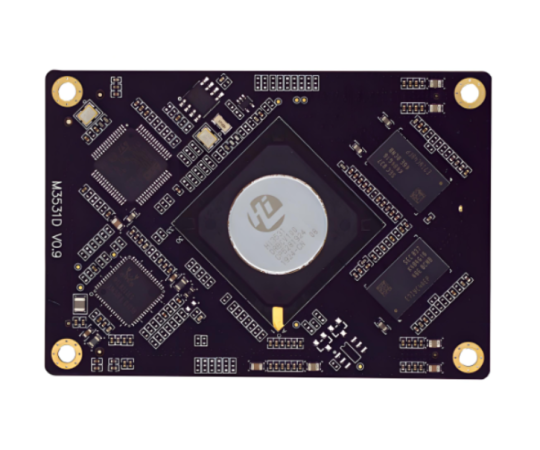
Huawei HiSilicon chips are a series of chips independently developed by HiSilicon Semiconductor Company under Huawei. ICgoodFind will also introduce some commonly sold chips in the industrial control industry other than the popular mobile phone Kirin chips.
Chip Features and Advantages:
Advanced Architecture Design: It features an advanced SoC architecture that can efficiently integrate multiple functional modules such as processors, communication modules, and graphics processing, achieving a balance between performance and power consumption.
Powerful Communication Capability: With the integrated self-developed communication baseband, it demonstrates excellent performance in communication, supporting multiple network standards and frequency bands, providing users with stable and fast network connections.
Excellent Artificial Intelligence Capability: It introduced artificial intelligence technology into chips relatively early. For example, the Kirin 970 is equipped with an artificial intelligence NPU chip, providing powerful computing power support for the intelligent applications of mobile phones.
Continuously Upgraded Process Technology: It has continuously evolved from the early 40nm process technology to adopt more advanced process technologies such as 16nm, 7nm, and even 5nm, improving the performance and energy efficiency of the chips.
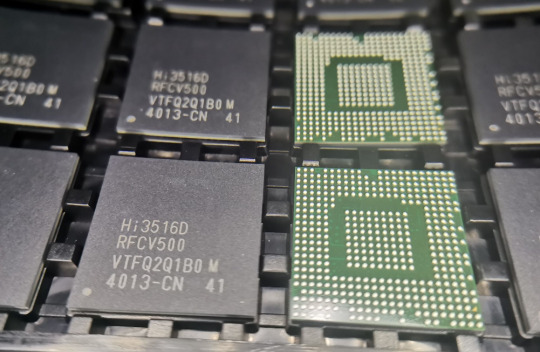
Now, the commonly used models of HiSilicon chips in the industrial field are:
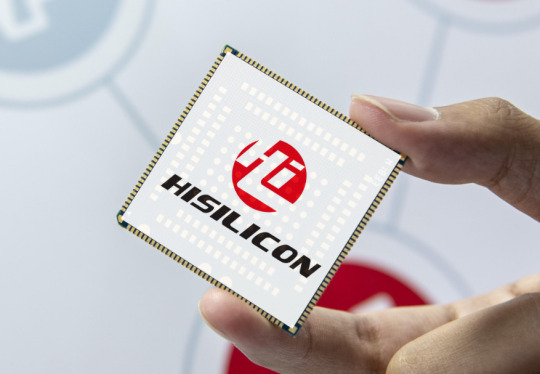
HI3531ARBCV100 Hisilicon
HI3519ARFCV100 Hisilicon
SC3105H Hisilicon
HI3531DRBCV100 Hisilicon
HI3516ARBCV300 Hisilicon
HI3519AV100 Hisilicon
HI3516DV300 Hisilicon
HI3516DRBCV300 Hisilicon
HI3516ERBCV300 Hisilicon
HI3516DV500 Hisilicon
HI3516EV300 Hisilicon
HI3516ERBCV100 Hisilicon
HI3520DRQCV300 Hisilicon
HI3556RFCV100 Hisilicon
HI3531DRBCV200 Hisilicon
HI3520DV400 Hisilicon
HI3521RFCV100 Hisilicon
HI1152GFCV100 Hisilicon
HI3536RBCV100 Hisilicon
HI3516ARBCV100 Hisilicon
HI3536DRBCV100 Hisilicon
HI3559ARFCV100 Hisilicon
HI3521 Hisilicon
HI3520DRBCV400 Hisilicon
HI3518ERBCV200 Hisilicon
HI3520DRQCV200 Hisilicon
HI3560ERQCV101 Hisilicon
HI3521DV100 Hisilicon
HI3798MRBCV20100000 Hisilicon
HI3536CRBCV100 Hisilicon
HI3556RBCV200 Hisilicon
HI3559AV100 Hisilicon
HI3518ERNCV300 Hisilicon
SD5117PRBCV100 Hisilicon
HI1151SGNCV208 Hisilicon
HI1151GNCV210 Hisilicon
HI3516ARFCV200 Hisilicon
HI3516ARBCV101 Hisilicon
HI3519RFCV101 Hisilicon
HI3559RBCV200 Hisilicon
HI3531RFCV100 Hisilicon
HI3516DRBCV100 Hisilicon
HI3516CRBCV500 Hisilicon
HI3521ARBCV100 Hisilicon
HI3798CRBCV201000 Hisilicon
HI3516CRBCV300 Hisilicon
HI3521DRBCV100 Hisilicon
HI3798MRBCV2010000 Hisilicon
SD5115TRBIV100 Hisilicon
HI3511RBCV110 Hisilicon
HI3559RFCV100 Hisilicon
HI3516ERNCV200 Hisilicon
HI3516CRBCV100 Hisilicon
HI3512 Hisilicon
HI3516A Hisilicon
HI3520RBCV100 Hisilicon
HI3535RBCV100 Hisilicon
HI3798CRBCV2010D0 Hisilicon
HI3798MRBCV201 Hisilicon
HI3516CRBCV200 Hisilicon
HI3130RNCV200 Hisilicon
HI3719CRBCV101000 Hisilicon
HI3796MRTCV20100000 Hisilicon
HI3535 Hisilicon
HI3515CRQCV100 Hisilicon
HI3251ARBCV510 Hisilicon
HI6361GFC Hisilicon
SD5116LRQIV100 Hisilicon
HI3798MRBCV101000 Hisilicon
HI3798MRQCV101000 Hisilicon
HI3532RFCV100 Hisilicon
HI3751ARBCV310HM00 Hisilicon
HI3521AV100 Hisilicon
HI3516CV500 Hisilicon
HI5001RNIV126 Hisilicon
HI3519RBCV100 Hisilicon
HI6403GWCV110 Hisilicon
HI3518ERBCV100 Hisilicon
HI3796MRBCV1010D0 Hisilicon
HI3798MRQCV1010D0 Hisilicon
HI3798MRBCV1010D0 Hisilicon
HI3796MRBCV101000 Hisilicon
HI3518ARBCV100 Hisilicon
HI3716MRBCV201000 Hisilicon
HI3518CRBCV100 Hisilicon
HI3881RNIV100 Hisilicon
HI3716MRQCV301000 Hisilicon
HI3515RBCV100 Hisilicon
HI3751ARBCV5510M00 Hisilicon
HI2115GBCV110 Hisilicon
HI3520ARFCV100 Hisilicon
HI6422GWCV100 Hisilicon
HI5620GNCV100 Hisilicon
HI3716MRQCV3010D0 Hisilicon
We hope that the content summarized by ICgoodFind will be helpful to the vast number of hardware engineers and friends engaged in HiSilicon solution development. In the highly competitive semiconductor arena, Huawei HiSilicon chips are undoubtedly a shining star.
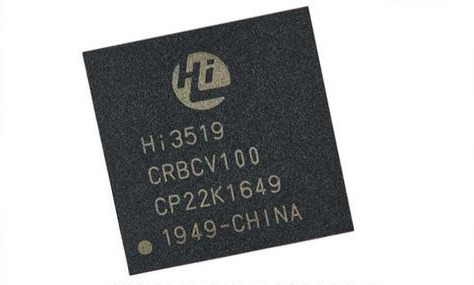
ICgoodFind has been always committed to following and interpreting the dynamics of the chip industry, especially the development of Huawei HiSilicon chips. From its establishment to its in-depth cultivation in different fields, from mobile phone chips to industrial control chips, Huawei HiSilicon chips have demonstrated extraordinary innovative capabilities and indomitable development spirit. The features and advantages of its chips not only reflect the advanced nature of technology but also indicate the future development direction of chips.
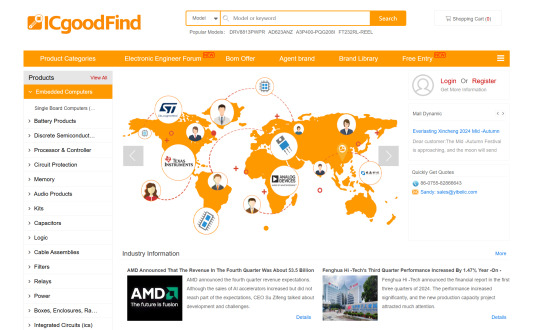
We believe that Huawei HiSilicon chips will continue to play an important role in the industry, injecting a continuous stream of impetus into the development of the global science and technology industry. Meanwhile, ICgoodFind will, as always, provide customers with high-quality electronic component chips and professional services, and witness the progress of science and technology together with everyone.
3 notes
·
View notes
Photo

Did you know that AMD's latest Ryzen Z2 APUs for handheld gaming PCs are causing confusion? Some models, like the Ryzen AI Z2 Extreme, include a premium NPU with AI capabilities, but their real benefits remain unclear. Interestingly, one of these chips appears to be just a rebranded older AMD chip—similar to what's found in Valve's Steam Deck—by design or coincidence? These chips span four generations of AMD architecture, from the old Zen 2-level Van Gogh to newer models based on Zen 5. While the AI-enabled version may future-proof handhelds for AI features like upscaling and smarter gameplay, it currently seems more like an expensive novelty. For those interested in budget-friendly handheld gaming, there's potential in devices based on the older chips, which could compete with and undercut the Steam Deck—if prices drop enough. But with AMD’s confusing branding, understanding what’s genuinely new or valuable is tricky. Are these new Ryzen APUs worth the hype, or just a marketing puzzle? Share your thoughts below! Explore custom builds at GroovyComputers.ca to craft your perfect gaming PC or handheld setup.
0 notes
Photo

Did you know that AMD's latest Ryzen Z2 APUs for handheld gaming PCs are causing confusion? Some models, like the Ryzen AI Z2 Extreme, include a premium NPU with AI capabilities, but their real benefits remain unclear. Interestingly, one of these chips appears to be just a rebranded older AMD chip—similar to what's found in Valve's Steam Deck—by design or coincidence? These chips span four generations of AMD architecture, from the old Zen 2-level Van Gogh to newer models based on Zen 5. While the AI-enabled version may future-proof handhelds for AI features like upscaling and smarter gameplay, it currently seems more like an expensive novelty. For those interested in budget-friendly handheld gaming, there's potential in devices based on the older chips, which could compete with and undercut the Steam Deck—if prices drop enough. But with AMD’s confusing branding, understanding what’s genuinely new or valuable is tricky. Are these new Ryzen APUs worth the hype, or just a marketing puzzle? Share your thoughts below! Explore custom builds at GroovyComputers.ca to craft your perfect gaming PC or handheld setup.
0 notes
Text
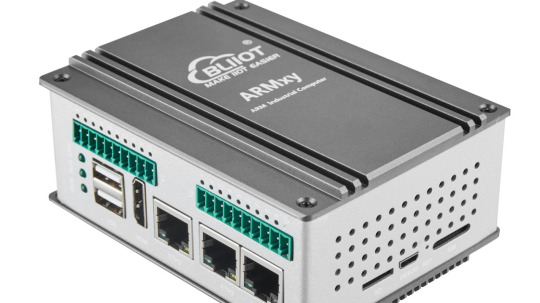
Launched New ARM Embedded Industrial Computer with RK3562J for ARMxy Series
The BL370 series is powered by the industrial-grade Rockchip RK3562/RK3562J processor, featuring a multi-core heterogeneous architecture with a quad-core ARM Cortex-A53 and a single-core ARM Cortex-M0, clocked at up to 1.8GHz/2.0GHz. It offers a robust solution with 4GB LPDDR4X RAM and 32GB eMMC storage, along with a rich set of I/O interfaces. The built-in 1 TOPS NPU supports deep learning capabilities, making it ideal for AI-driven applications.
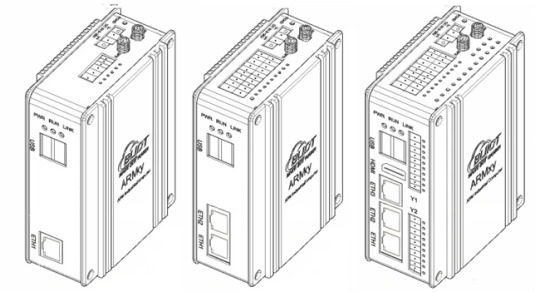
Key Features:
High Reliability and Cost-Effectiveness: The BL370 series is widely used in industrial control, edge computing, AIoT, artificial intelligence, communication management, AGV robots, machine vision, robotics, industrial IoT gateways, energy storage systems, automation control, and rail transportation.
Versatile Connectivity:
Data Acquisition and Control: Supports communication, PWM output, pulse counting, and more.
Video Processing: Capable of 1080P@60fps H.264 encoding and 4K@30fps H.265 decoding.
Wireless Communication: Built-in Mini PCIe interface supports Bluetooth, WiFi, 4G, and 5G modules.
Software and Development Support:
Operating Systems: Linux-5.10.198, Linux-RT-5.10.198, Ubuntu 20.04, Debian 11 (planned), Android 13 (planned).
Development Tools: Docker containers, Node-RED, and Qt-5.15.2 for GUI development.
Industrial Software:
Robust Design for Harsh Environments:
The BL370 series has undergone professional electrical performance design and high/low-temperature testing, ensuring stable operation in extreme conditions with temperatures ranging from -40°C to 85°C and resistance to electromagnetic interference. Its DIN35 rail mounting makes it suitable for various industrial applications.
Typical Application Areas:
Industrial Control
Energy Storage Systems (EMS/BMS)
AIoT and Artificial Intelligence
Smart Manufacturing
Communication Management
AGV Robots
Machine Vision
Edge Computing
Motion Control
Robotics
Rail Transportation
Smart Devices
The BL370 series combines high performance, reliability, and versatility, making it an ideal solution for demanding industrial and IoT applications.
0 notes
Text
Introducing the FCU3501, our rugged, next-gen embedded computer powered by the Rockchip RK3588 SoC. Designed for industrial AI at the edge, it delivers up to 32 TOPS of AI performance via onboard NPU + Hailo-8 M.2 accelerator.
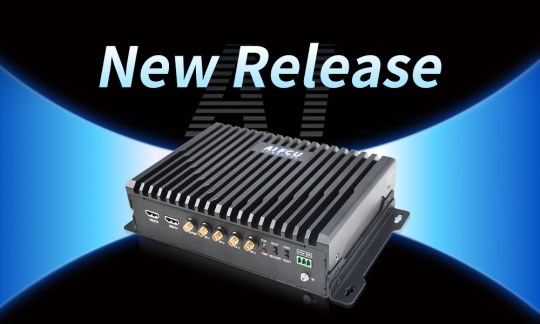
🔧 Key Features:
Dual NPU Architecture – 6 TOPS onboard + 26 TOPS via Hailo‑8
Supports 8K Video Encoding/Decoding – Perfect for smart vision applications
Wide Temp, Fanless Design (–40 °C to +85 °C)
Certified for Industrial Use – CE, FCC, RoHS, EMC-compliant
Modular Storage & Expansion – M.2 SSD, TF card, 4G/5G optional
Rich I/O for Smart Factories, Transportation, Buildings & more
📩 Want a spec sheet or evaluation sample? Contact us: [email protected]
#EdgeAI#RK3588#Hailo8#EmbeddedComputer#IndustrialAutomation#AIAccelerator#SmartFactory#MachineVision#ProductLaunch
0 notes
Link
#AImiddleware#AI-optimizedsilicon#co-designframeworks#edgecomputing#HybridArchitectures#neuromorphicdesign#regionalinnovation#semiconductorecosystems
0 notes
Link
Sparse large language models (LLMs) based on the Mixture of Experts (MoE) framework have gained traction for their ability to scale efficiently by activating only a subset of parameters per token. This dynamic sparsity allows MoE models to retain hi #AI #ML #Automation
0 notes
Text
Huawei Introduces Pangu Ultra MoE: A 718B-Parameter Sparse Language Model Trained Efficiently on Ascend NPUs Using Simulation-Driven Architecture and System-Level Optimization
Huawei Introduces Pangu Ultra MoE: A 718B-Parameter Sparse Language Model Trained Efficiently on Ascend NPUs Using Simulation-Driven Architecture and System-Level Optimization
0 notes
Text
What are power optimization techniques in embedded AI systems?
Power efficiency is a critical concern in embedded AI systems, particularly for battery-operated and resource-constrained devices. Optimizing power consumption ensures longer operational life, reduced heat dissipation, and improved overall efficiency. Several key techniques help achieve this optimization:
Dynamic Voltage and Frequency Scaling (DVFS): This technique adjusts the processor’s voltage and clock speed dynamically based on workload requirements. Lowering the frequency during idle or low-computation periods significantly reduces power consumption.
Efficient Hardware Design: Using low-power microcontrollers (MCUs), dedicated AI accelerators, and energy-efficient memory architectures minimizes power usage. AI-specific hardware, such as Edge TPUs and NPUs, improves performance while reducing energy demands.
Sleep and Low-Power Modes: Many embedded AI systems incorporate deep sleep, idle, or standby modes when not actively processing data. These modes significantly cut down power usage by shutting off unused components.
Model Quantization and Pruning: Reducing the precision of AI models (quantization) and eliminating unnecessary model parameters (pruning) lowers computational overhead, enabling energy-efficient AI inference on embedded systems.
Energy-Efficient Communication Protocols: For IoT-based embedded AI, using low-power wireless protocols like Bluetooth Low Energy (BLE), Zigbee, or LoRa helps reduce power consumption during data transmission.
Optimized Code and Algorithms: Writing power-efficient code, using optimized AI frameworks (e.g., TensorFlow Lite, TinyML), and reducing redundant computations lower energy demands in embedded AI applications.
Adaptive Sampling and Edge Processing: Instead of continuously transmitting all sensor data to the cloud, embedded AI systems perform on-device processing, reducing communication power consumption.
Mastering these power optimization techniques is crucial for engineers working on intelligent devices. Enrolling in an embedded system certification course can help professionals gain expertise in designing efficient, low-power AI-driven embedded solutions.
0 notes
Text
MediaTek Kompanio 838 Top 8 tech features for Chromebooks

MediaTek Kompanio 838: Boosts Productivity and Provides Longer Battery Life in Chromebooks That Lead the Class
High performance computing is offered by the MediaTek Kompanio 838, which boosts productivity and improves multimedia, online surfing, and gaming. With the great battery life offered by this highly efficient 6nm processor, Chromebook designs that are thin and light will enable users, educators, and students to be genuinely mobile throughout the day.
Boost innovative thinking, learning, and productive work
The MediaTek Kompanio 838 is a major improvement over the lower-end Kompanio 500 series, offering exceptional performance and greater multitasking.
Due to a doubling of memory bandwidth over previous generations, the improved octa-core CPU with faster Arm “big core” processors and a highly capable tri-core graphics engine can handle significantly more data at a faster rate.
With compatibility for both DDR4 and LPDDR4X, OEMs can now design products with greater flexibility to satisfy market performance needs and BOM targets. Additionally, the highly integrated architecture offers the highest power efficiency available on the market for long-lasting batteries.
Up to 76% quicker visual performance
Increased performance in CPU-based benchmarks by up to 66%
Performance in web-based benchmarks was up to 60% better than that of the MediaTek Kompanio 500 series.
Superior Image Processing Unit for Cameras
The MediaTek Kompanio 838 equips Chromebooks with state-of-the-art dual camera technology and high quality imaging features. Photos and videos produced with the new MediaTek Imagiq 7 series ISP have more vibrant colours, especially in difficult lighting situations, thanks to improvements in HDR and low-light capture quality over the previous generation.
Improved AI on-Device
With unmatched power efficiency, the MediaTek Kompanio 838 with MediaTek NPU 650 offers entertainment that is more engaging and of higher quality. The MediaTek NPU can quickly complete complicated computations and is optimized for processing picture data efficiently.
Dual 4K Displays
For demos, presentations, movie nights, or just increased productivity with more visual real estate, premium Chromebooks with the highest quality screens may also output at the same resolution to a connected 4K smart TV or monitor thanks to support for 4K dual displays.
Perfect for 4K Media Streaming
With hardware-accelerated AV1 video decoding built right into the CPU, the MediaTek Kompanio 838 is now the perfect device for effortlessly streaming high-quality 4K video content without using up too much battery life.
Lightning-fast, safe WiFi
Support with MediaTek Filogic Wi-Fi 6 and Wi-Fi 6E chipsets by the MediaTek Kompanio 838 allows for dual- and tri-band connectivity choices. This enables more dependable connections with 2×2 antennas, quicker speeds of up to 1.9Gbps, and improved security with WPA3.
Extended Battery Life
With the class-leading power efficiency of the highly integrated 6nm processor, Chromebook designers can now construct fanless, silent devices with true all-day battery life.
The MediaTek Kompanio 838 is an excellent tool for the classroom that increases productivity and offers fluid 4K multimedia and web surfing experiences. With the great battery life offered by this highly efficient processor, Chromebook designs that are small and light enable teachers and students to be genuinely mobile throughout the day. These are the top 8 internal tech elements that support more creative thinking, learning, and productive working.
Top 8 Kompanio 838 tech features
1) Improved Efficiency
The MediaTek Kompanio 838 boasts an octa-core CPU with Arm Cortex-A78 ‘large core’ processors, a powerful tri-core graphics engine, twice the memory bandwidth of previous generation platforms, and exceptional speed and enhanced multitasking.
2) HDR cameras that capture excellent low light images
With the improved HDR and low-light capture quality of its latest generation MediaTek Imagiq 7 series ISP, images and videos have more vibrant colours even in difficult lighting situations. For more options and product distinctiveness, product designers can even incorporate dual camera designs with various lenses or sensors.
3) High Definition Webcams
Manufacturers of devices can design 4K webcams to provide superb streaming quality, which enhances your credibility when participating in video conferences and working remotely. In remote learning scenarios, this capability enables students to view the entire classroom and additional information on slides.
4) Improvement of On-Device AI
With unmatched power efficiency, the MediaTek NPU 650, which is integrated into the processor, offers effective picture data processing for more interactive and superior multimedia.
5) Upgrade the workstation with two 4K monitors.
Chromebook manufacturers can now incorporate the greatest detail screens into their newest models and add an external display connection that can output at the same resolution thanks to support for not just one, but two 4K monitors. For demos, presentations, movie evenings, or just to enjoy a healthy dose of increased productivity due to the extra visual real estate, connect to a 4KTV, monitor, or projector.
6) Perfect for Media Streaming in 4K
Now that the MediaTek Kompanio 838 has hardware-accelerated AV1 video decoding built into the CPU, it’s perfect for effortlessly viewing high-quality 4K video streams with the least amount of battery waste.
7) Extended Battery Life
With its class-leading power efficiency and true all-day battery life, this processor—which is based on an advanced 6nm chip production process—allows Chromebook designers to create designs that are light, thin, and even fanless. It also gives users the confidence to leave their charger at home.
8) Lightning-fast, safe WiFi
Although not a component of the Kompanio 838 processor itself, the platform gives device manufacturers the choice to use MediaTek Filogic Wi-Fi 6 or Wi-Fi 6E chipsets, based on what the market demands. This makes it possible to have dual-band or tri-band connectivity options. Both provide dependable connections through 2×2 antenna, improved WPA 3 security, and throughput speeds of up to 1.9Gbps (when using Wi-Fi 6E).
Read more on Govindhtech.com
#Highperformancecomputing#MediaTekKompanio838#Kompanio500series#DDR4#Chromebooks#premiumChromebooks#monitor#news#technews#technology#technologynews#technologytrends#govindhtech
5 notes
·
View notes
Text
AI Chips = The Future! Market Skyrocketing to $230B by 2034 🚀
Artificial Intelligence (AI) Chip Market focuses on high-performance semiconductor chips tailored for AI computations, including machine learning, deep learning, and predictive analytics. AI chips — such as GPUs, TPUs, ASICs, and FPGAs — enhance processing efficiency, enabling autonomous systems, intelligent automation, and real-time analytics across industries.
To Request Sample Report : https://www.globalinsightservices.com/request-sample/?id=GIS25086 &utm_source=SnehaPatil&utm_medium=Article
Market Trends & Growth:
GPUs (45% market share) lead, driven by parallel processing capabilities for AI workloads.
ASICs (30%) gain traction for customized AI applications and energy efficiency.
FPGAs (25%) are increasingly used for flexible AI model acceleration.
Inference chips dominate, optimizing real-time AI decision-making at the edge and cloud.
Regional Insights:
North America dominates the AI chip market, with strong R&D and tech leadership.
Asia-Pacific follows, led by China’s semiconductor growth and India’s emerging AI ecosystem.
Europe invests in AI chips for automotive, robotics, and edge computing applications.
Future Outlook:
With advancements in 7nm and 5nm fabrication technologies, AI-driven cloud computing, and edge AI innovations, the AI chip market is set for exponential expansion. Key players like NVIDIA, Intel, AMD, and Qualcomm are shaping the future with next-gen AI architectures and strategic collaborations.
#aichips #artificialintelligence #machinelearning #deeplearning #neuralnetworks #gpus #cpus #fpgas #asics #npus #tpus #edgeai #cloudai #computervision #speechrecognition #predictiveanalytics #autonomoussystems #aiinhealthcare #aiinautomotive #aiinfinance #semiconductors #highperformancecomputing #waferfabrication #chipdesign #7nmtechnology #10nmtechnology #siliconchips #galliumnitride #siliconcarbide #inferenceengines #trainingchips #cloudcomputing #edgecomputing #aiprocessors #quantumcomputing #neuromorphiccomputing #iotai #aiacceleration #hardwareoptimization #smartdevices #bigdataanalytics #robotics #aiintelecom
0 notes